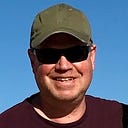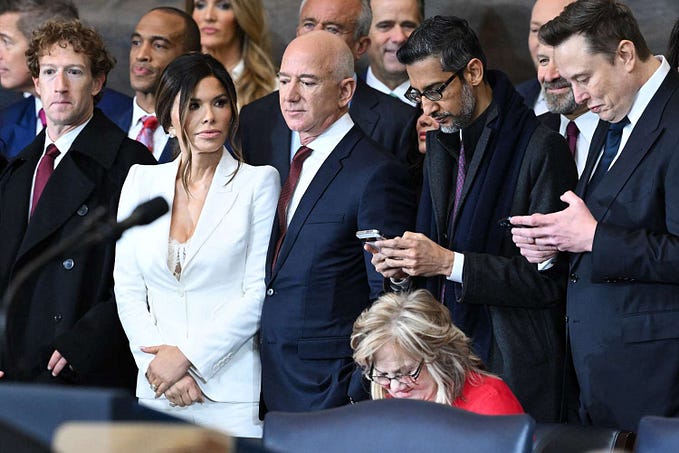Random Stories From My Life
My Private Tour of the West Wing of the White House
And the whirlwind weekend that made it happen …

It’s 1997. The White House, Washington, D.C.
And no one is more surprised than I am, on being escorted by a Secret Service officer into the West Wing, for an unexpected personal tour.
“And you may ask yourself … ‘How did I get here?’” 🎶
First, a bit of backstory …
One of my several careers was 15 years spent in post-production in Los Angeles, as picture editor on numerous video & television projects.
Here’s one project that was unique and memorable:
In the summer & fall of ’97, I worked with Connie Stevens on a feature documentary she directed, entitled A Healing: Journey Back to Vietnam.
In the ’60s, Ms. Stevens toured Southeast Asia during the Vietnam War — as a headlining performer on Bob Hope’s famous USO tours. The tours brought entertainment and a much-needed morale boost to GIs serving during the war, some of whom Stevens got to know.
Decades later, in 1995, a film crew accompanies her in revisiting Vietnam with dozens of women who’d served there as nurses — seeing the places where they’d served and attended to wounded soldiers, many of whom never made it home — to help tell their powerful & emotional stories.

Later, Connie & I are editing the film at her mansion in Holmby Hills, just outside Los Angeles. We spend most of our time in a small studio outbuilding perched next to an Olympic-sized pool and private tennis court.
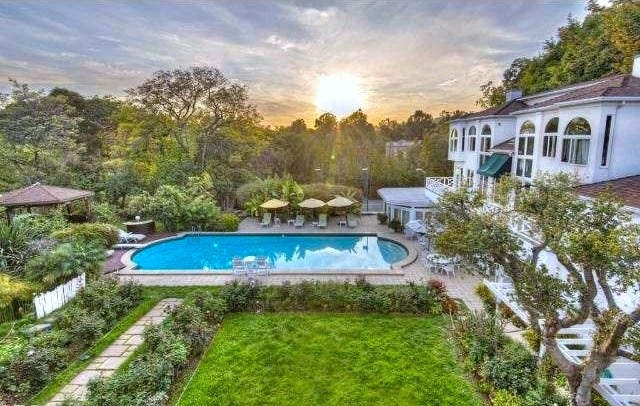
But this is hardly a vacation: working long sessions together, doing 80-plus hour weeks to meet a looming deadline. So we decide early on that, rather than my using valuable time doing a daily commute to get here, it’s much more productive if I stay at the mansion full-time, until the film is complete.
And so it happens that I live at Stevens’ mansion for nearly three months. After each long day working on her Avid Media Composer editing system, honing each of the film’s powerful sequences together, I crash upstairs in my own modest but private apartment, about a 30-second walk from the studio building — then get up the next day & do it all over again, seven days a week, nearly non-stop.
And the looming deadline? The dedication of a new memorial at Arlington National Cemetery in Washington, D.C., in honor of Women in Military Service for America.
During the weeks of putting finishing touches on the film, I also get to know some of Connie’s inner circle: daughter, actress & singer Tricia Leigh Fisher (who shares the estate with Connie); daughter, actress and producer Joely Fisher and her cinematographer husband, Chris Duddy (both regular visitors); an actor neighbor by the name of Tony; and various other staffers and assistants. At one point, Tricia shoots a music video on the estate, and I help out with that as well.
Finally, after week upon week of intense work, we wind down on post-production of the documentary in early October, and the group prepares to head to D.C. for the dedication of the memorial, and the premiere of the film.
And one day, Connie mentions she has an extra hotel room available in D.C. for that long weekend … and would I like to join them?
Sure thing — it’d be a nice break from all the long hours we’ve spent focused on wrapping up the film. So I join the Stevens clan for that weekend, after which I decide to stay on in D.C. & do some sightseeing of my own.
And it turns out to be quite a weekend.
Thursday
We arrive, get settled in, have dinner at the hotel, and welcome others who’ve flown in for the occasion.
Friday
I accompany Connie & her press agent on a visit to National Public Radio, where she’ll do an interview for All Things Considered.
And the ride over to the NPR studio brings my first vivid impression of the trip: being whisked in a limo through downtown D.C., first on side streets, then emerging onto the wide expanse of Pennsylvania Avenue — whereupon, at the end of the long boulevard before us, the Capitol building abruptly reveals itself, shining brightly in the fall sunlight. Magnificent. Connie leans over: “Ron, I’m really glad you joined us on the trip.” She’s right — it’s already too good to have missed.
That evening, she throws a celebratory dinner at an upscale Italian restaurant in town. In attendance are dozens of people, including some of the nurses profiled in the film, and others: Adrian Cronauer, a friend of Connie’s (and famously portrayed by Robin Williams in the film Good Morning, Vietnam) is there as well, and offers some heartfelt words about the nurses and Connie’s film.

Saturday
Brings the dedication of the memorial itself … and 30,000 people show up.
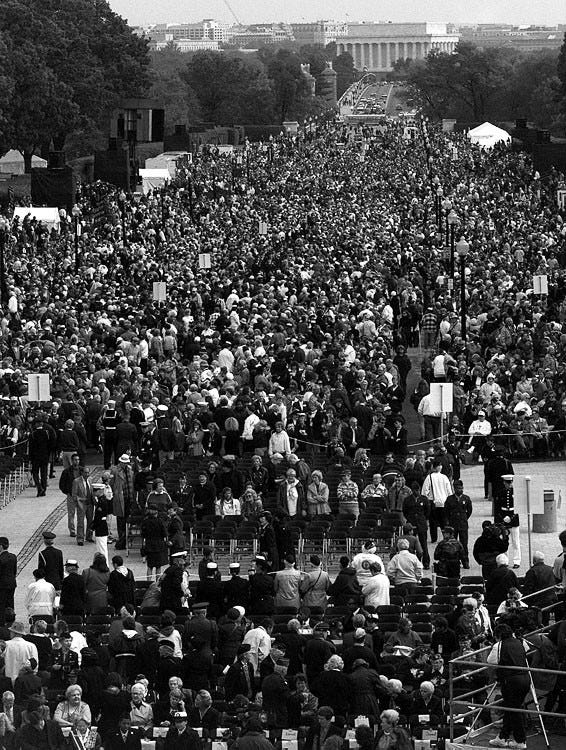
VIPs like Connie attend as distinguished invited guests. Rather than brave the crowd, I head to the Air & Space Museum instead, and plan to visit the memorial in a few days once things quiet down a bit.
Later, two of my own friends fly in for the occasion. We take in an early screening at the Crystal City Marriott in Arlington, Virginia. Seeing the film on the big screen makes it worth all the effort.
6pm
My friends and I decide to do some evening sightseeing, and head over to the Watergate Hotel, where we get a drink at the bar. It’s quite upscale — though fairly laid back right now, so we chat with the concierge. He tells us about the complex and its history, offers a few souvenirs, and mentions some of the people who frequent the place. (“See the man who just left the bar? That’s Neil Simon, the playwright …”)

He then offers a tour of one of the hotel’s suites — and from the upstairs balcony, we take in a spectacular view of the Foggy Bottom area & Potomac River. (When people hear the name “Watergate,” they typically think of the history-making scandal under Nixon. But for the D.C. crowd, it’s a highly-desirable address for a select few who call it home.)
7pm
Since my friends have newly arrived in town, they haven’t seen the White House yet. So we hop a cab downtown, and walk over to the fence overlooking the south lawn. It’s a beautiful fall evening, and other tourists are milling about, also enjoying the view and taking pictures. (In 1997, you can walk right up to the fence bordering the White House grounds.)
As we stroll along the sidewalk, we meet one of the uniformed Secret Service officers posted at intervals around the perimeter, and strike up a conversation. Jim is about thirty years old, obviously very alert and attentive, yet seems approachable. (Since Bill and Hillary Clinton are away on a trip to Latin America, it appears to be a bit more relaxed time for the protective detail.)

We chat, and ask about the life of a Secret Service officer. Then my friends tell him about me, the entourage I’m with, and the festivities that brought our group to town. I can now see by Jim’s manner that he regards us as legit. And so, after a pleasant conversation, he says he’s close to taking his break … and if we meet him at the northwest entrance at 8:15pm, he’ll give us a little tour. He draws a quick handwritten map.

7:40pm
Now, we have to endure a long half-hour wait to see what’s next. My friends & I wander up 17th Street to the corner of Pennsylvania Avenue, and the one place in sight where we can sit down & grab a quick bite to eat: the McDonald’s that Bill Clinton likes to stop at for a Big Mac after jogging.
Our minds are racing: Is this really happening? What does our host have in mind? We manage to pass the time, though more or less speechless.
8:10pm
We head across the street to the guard gate … and sure enough, Jim greets us there. This really IS happening, whatever it is.
We go through Security. An x-ray machine, hand-inspection of our belongings, and we sign in. We’re issued lanyards with red badges that say “Appointment A” … which look just like they will on The West Wing (the fictional TV version) once it airs in a couple of years.
Now inside that imposing fence, we walk up the driveway to the West Wing. This, Jim explains, is where dignitaries and foreign heads of state drive up in their limos for meetings with the President.

We head into the Press Room. It’s OK to take photos here, unlike elsewhere inside. (And thankfully, since we’d been sightseeing, we did have cameras with us; this is long before cell phones make cameras ubiquitous.)

After looking around a bit, we head back outside. At the main lobby entrance, another officer waves the four of us in.
And we immediately notice the West Wing has a very dignified air.
As Jim takes us around, he offers encyclopedic knowledge of the place. He points out architectural features and gives us historical context as we walk. There are many different paintings decorating the walls, some priceless. The president and his staff can request loans of great works of art from the National Gallery and other museums. Along another wall: three of Norman Rockwell’s original Saturday Evening Post covers hang side-by-side.

Also throughout, hanging on the walls, huge framed enlargements of photos of daily life and special events, taken by the official White House photographer. And there’s a Secret Service tradition: each agent initials the back of their favorite photo — and at end of that administration, gets to keep the enlargement as a souvenir. My favorite? A rear point-of-view shot of Socks the Cat standing on his hind legs in the presidential limo, admiring the view.
Further down the hall on the left is the Roosevelt Room, where VIPs wait prior to meeting with the President. (In real life, it’s much like in the TV show — minus all the dramatic lighting.) And still more famous paintings. At one point I find myself standing next to Teddy Roosevelt’s Nobel Peace prize medallion — also on loan, sitting on the mantle.
Then, down the hall to the Cabinet Room. There’s a long, impressive-looking mahogany conference table, with leather chairs all around. One is taller than the others: the President’s seat is centrally-located; it’s from here he consults with Cabinet members, advisors, military brass, and the like.
And then back, diagonally across from the Roosevelt Room — there it is: the Oval Office.

Built on this spot during a massive renovation in 1934, this is where presidents including FDR, Truman, Eisenhower, JFK, and others have carried out their official duties as chief executive of the United States. It’s where Nixon telephoned Neil Armstrong and Buzz Aldrin as they were walking on the moon.
There’s a powerful sense of history here.
A red velvet rope is at the door, not to be crossed. We do lean in and admire the view: there’s the famous Resolute desk, a gift from Queen Victoria in 1880. Behind it, numerous photos and mementos, flags of the U.S. and of the President, and windows that look out on the south lawn.
The Oval Office walls are painted a pale yellow. Since color affects mood, the President had chosen the color that best affords concentration and focus.
Jim mentions the only reason we’re able to be here is because POTUS & FLOTUS are away. If either were here, such a tour would never have been possible.
And indeed, more than once as we walk the halls of the West Wing, my friends and I turn to each other incredulously, and mouth the words: “Can you f—ing believe this?”
Next, we walk outside and over to the Residence. There’s scaffolding on the exterior, marking it as under renovation.

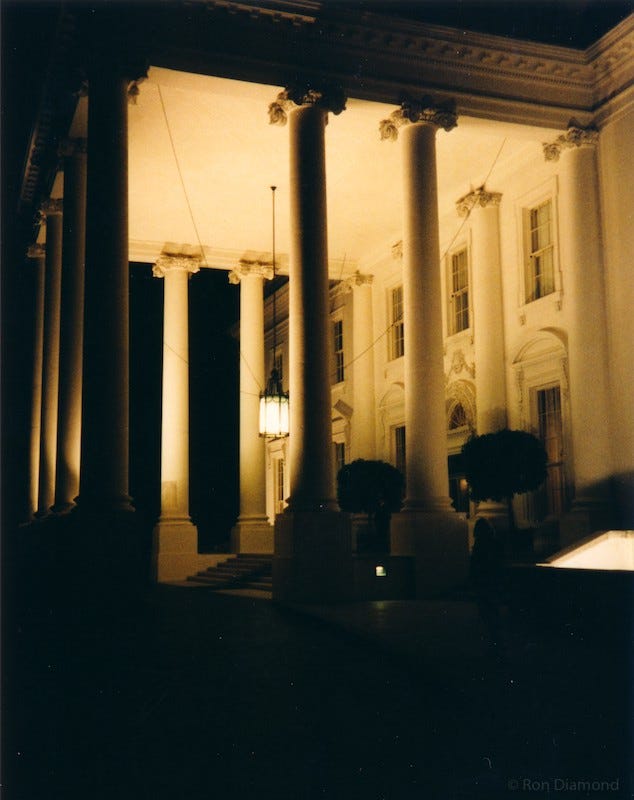
We enter the ground floor, and take a peek into the nearby kitchen which serves up vast meals for State dinners. One of the hallway doorframes has a curious dark brown rectangle just above eye level. Jim explains that the White House was recently repainted, with dozens of layers of paint stripped down to bare wood … revealing actual burn marks from the arson by British soldiers in the War of 1812(!).
Clinton, who was moved by the deep sense of history, asked that two small sections of that wood remain uncovered: here, on the ground floor of the residence; as well as on the private third-floor Truman Balcony overlooking the Rose Garden. It’s a point of pride that the President offers it as a bit of history for his White House visitors.
Next, it’s down the hallway to the colonnade adjoining the East Wing. We enter the White House movie theater, a medium-sized screening room with large plush velvet seats and curtains. Very cozy. Not a bad place to take in a flick.
Here, A-list directors bring prints of their upcoming films to show the First Family & their guests. This is where, in 1985, Robert Zemeckis famously screened his new film, Back To The Future, for President Reagan. And when Marty McFly meets the 1955 version of Doc Brown, who asks skeptically …
“Alright, future boy — who’s President of the United States in 1985?”
“Ronald Reagan.”
“The actor? HA!”
… Reagan practically fell out of his chair laughing so hard, they had to stop the film & run the projector back once he’d regained his composure.
9pm
Continuing on through the East Wing, it’s time for our guide to head back to duty. We thank him profusely as he escorts us to the northeast entrance and collects our badges.
And we head back outside the fence, and into the D.C. night.

Postscript, 2018
In my first visit to D.C. since, I notice the changes around the White House, post-9/11. There’s a far heavier security presence … now, tourists can’t even approach that perimeter fence … and no one gets impromptu tours. Nowadays, it requires formal paperwork, background checks, and far more official reasons for being there than we had, twenty years back.
Way back in ’97, we were only too aware it was a once-in-a-lifetime event.
